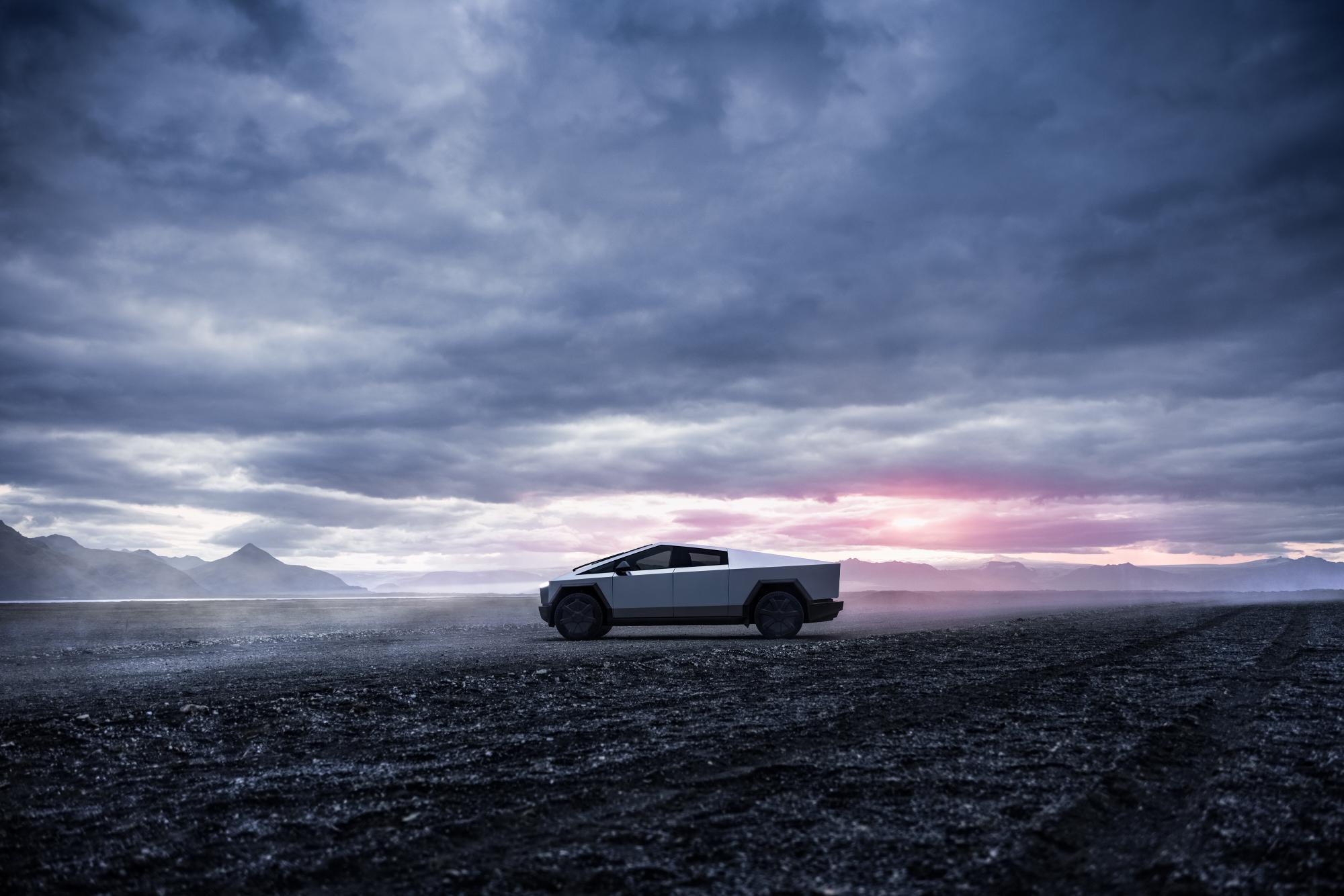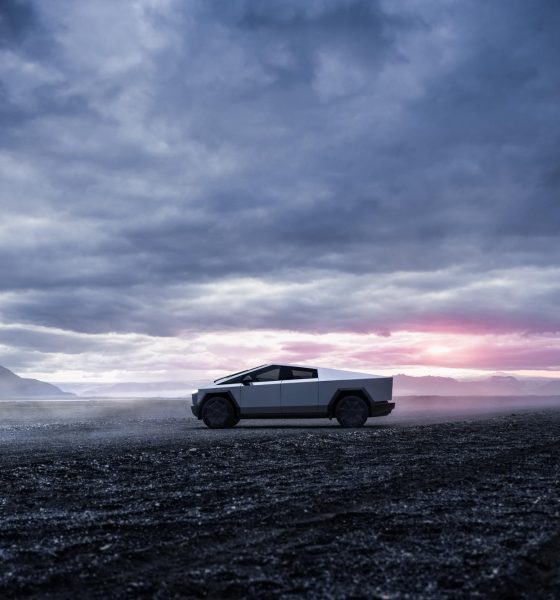

News
Tesla posts ‘first positive surprise of year’ as Morgan Stanley breaks down Q2
Tesla posted what Morgan Stanley called its “first positive surprise of the year” as it beat delivery expectations for Q2 by around 6,000 units.
On Tuesday, Tesla reported its quarterly deliveries at 443,956, beating what Wall Street expected with its consensus figures at 438,019.
Tesla reports Q2 delivery and production figures, beating estimates
The beat was a big step in the right direction for Tesla, which has struggled to post any positive news so far in 2024 in terms of the grand scale. The automaker has struggled with growth, an expected bottleneck in its trek for EV sector domination as it finds itself in between two growth periods.
However, the Q2 numbers were labeled the “first positive surprise of the year” by Morgan Stanley analyst Adam Jonas, who said there were a few things to be happy about.
Delivery Beat
Tesla beat delivery expectations, but there is still a long way to go before bulls can truly be pleased with what they see. Although they increased deliveries quarter-over-quarter, the Q2 figures are lower than what Tesla reported in Q2 last year.
In order to keep things flat in terms of the annual growth rate and report 0 percent instead of a loss, Tesla will need to grow deliveries in the second half of next year by roughly 6 percent.
Inventory Reduction
Tesla delivered 33,000 more units than it produced, which means its inventory is starting to thin out.
This is a good thing from a consumer perspective because, in theory, it means that Tesla cannot keep up with consumer interest. It basically means demand for its vehicles is healthy, and people are willing to buy an inventory vehicle.
Jonas writes:
“Tesla delivered 33k units more than it produced in 2Q, driving a 7-day reduction in days’ supply of inventory (on a full calendar day basis) in the quarter. The 2Q inventory reduction substantially (but not fully) offsets the incresae in inventory seen in 1Q. At an ATP of $45k/unit this, by itself, drives a $1.5bn working capital inflow during the quarter — higher than the $600mm tailwind we have expected. Our 2Q forecast for $0.9bn FCF burn looks incrementally more conservative following this print.”
Energy Storage Deployments
Perhaps the biggest piece of information from the delivery report had nothing to do with cars in the slightest.
Tesla reported that it deployed 9.4 GWh of energy storage products in Q2, its biggest in history by a wide margin.
This was a 132 percent increase from Q1 2024, which was previously its largest deployment. Tesla rolled out 4.053 GWh of energy during this three-month span.
Tesla Energy posts record 9.4 GWh of battery storage deployed in Q2 2024
Jonas said the news was a “show stealer” and was nearly two-times what Morgan Stanley predicted for the calendar year.
The firm believes this could be something Tesla investors should pay attention to in the coming months:
“As Gen AI acceleration spurs a multigenerational increase in energy demand, electricity generation, and data center investment, we believe investors will begin to pay more attention to Tesla Energy, which we value at $36 per Tesla share ($130bn) as the business uniquely positioned to benefit from investment in the U.S. electric grid accelerated by the AI boom.”
Tesla Mojo
Jonas said that two weeks ago, clients were preparing for a rejection in ratification of Musk’s 2018 pay package. Now, they’re asking about “positive catalysts for 2Q and beyond.”
Investors were also asked this interesting question:
“Is this the same Tesla from early June?”
I’d love to hear from you! If you have any comments, concerns, or questions, please email me at joey@teslarati.com. You can also reach me on Twitter @KlenderJoey, or if you have news tips, you can email us at tips@teslarati.com.

News
Tesla starts showing how FSD will change lives in Europe
Local officials tested the system on narrow country roads and were impressed by FSD’s smooth, human-like driving, with some calling the service a game-changer for everyday life in areas that are far from urban centers.

Tesla has launched Europe’s first public shuttle service using Full Self-Driving (Supervised) in the rural Eifelkreis Bitburg-Prüm region of Germany, demonstrating how the technology can restore independence and mobility for people who struggle with limited transport options.
Local officials tested the system on narrow country roads and were impressed by FSD’s smooth, human-like driving, with some calling the service a game-changer for everyday life in areas that are far from urban centers.
Officials see real impact on rural residents
Arzfeld Mayor Johannes Kuhl and District Administrator Andreas Kruppert personally tested the Tesla shuttle service. This allowed them to see just how well FSD navigated winding lanes and rural roads confidently. Kruppert said, “Autonomous driving sounds like science fiction to many, but we simply see here that it works totally well in rural regions too.” Kuhl, for his part, also noted that FSD “feels like a very experienced driver.”
The pilot complements the area’s “Citizen Bus” program, which provides on-demand rides for elderly residents who can no longer drive themselves. Tesla Europe shared a video of a demonstration of the service, highlighting how FSD gives people their freedom back, even in places where public transport is not as prevalent.
What the Ministry for Economic Affairs and Transport says
Rhineland-Palatinate’s Minister Daniela Schmitt supported the project, praising the collaboration that made this “first of its kind in Europe” possible. As per the ministry, the rural rollout for the service shows FSD’s potential beyond major cities, and it delivers tangible benefits like grocery runs, doctor visits, and social connections for isolated residents.
“Reliable and flexible mobility is especially vital in rural areas. With the launch of a shuttle service using self-driving vehicles (FSD supervised) by Tesla in the Eifelkreis Bitburg-Prüm, an innovative pilot project is now getting underway that complements local community bus services. It is the first project of its kind in Europe.
“The result is a real gain for rural mobility: greater accessibility, more flexibility and tangible benefits for everyday life. A strong signal for innovation, cooperation and future-oriented mobility beyond urban centers,” the ministry wrote in a LinkedIn post.
News
Tesla China quietly posts Robotaxi-related job listing
Tesla China is currently seeking a Low Voltage Electrical Engineer to work on circuit board design for the company’s autonomous vehicles.

Tesla has posted a new job listing in Shanghai explicitly tied to its Robotaxi program, fueling speculation that the company is preparing to launch its dedicated autonomous ride-hailing service in China.
As noted in the listing, Tesla China is currently seeking a Low Voltage Electrical Engineer to work on circuit board design for the company’s autonomous vehicles.
Robotaxi-specific role
The listing, which was shared on social media platform X by industry watcher @tslaming, suggested that Tesla China is looking to fill the role urgently. The job listing itself specifically mentions that the person hired for the role will be working on the Low Voltage Hardware team, which would design the circuit boards that would serve as the nervous system of the Robotaxi.
Key tasks for the role, as indicated in the job listing, include collaboration with PCB layout, firmware, mechanical, program management, and validation teams, among other responsibilities. The role is based in Shanghai.
China Robotaxi launch
China represents a massive potential market for robotaxis, with its dense urban centers and supportive policies in select cities. Tesla has limited permission to roll out FSD in the country, though despite this, its vehicles have been hailed as among the best in the market when it comes to autonomous features. So far, at least, it appears that China supports Tesla’s FSD and Robotaxi rollout.
This was hinted at in November, when Tesla brought the Cybercab to the 8th China International Import Expo (CIIE) in Shanghai, marking the first time that the autonomous two-seater was brought to the Asia-Pacific region. The vehicle, despite not having a release date in China, received a significant amount of interest among the event’s attendees.
Elon Musk
Elon Musk and Tesla AI Director share insights after empty driver seat Robotaxi rides
The executives’ unoccupied tests hint at the rapid progress of Tesla’s unsupervised Robotaxi efforts.

Tesla CEO Elon Musk and AI Director Ashok Elluswamy celebrated Christmas Eve by sharing personal experiences with Robotaxi vehicles that had no safety monitor or occupant in the driver’s seat. Musk described the system’s “perfect driving” around Austin, while Elluswamy posted video from the back seat, calling it “an amazing experience.”
The executives’ unoccupied tests hint at the rapid progress of Tesla’s unsupervised Robotaxi efforts.
Elon and Ashok’s firsthand Robotaxi insights
Prior to Musk and the Tesla AI Director’s posts, sightings of unmanned Teslas navigating public roads were widely shared on social media. One such vehicle was spotted in Austin, Texas, which Elon Musk acknowleged by stating that “Testing is underway with no occupants in the car.”
Based on his Christmas Eve post, Musk seemed to have tested an unmanned Tesla himself. “A Tesla with no safety monitor in the car and me sitting in the passenger seat took me all around Austin on Sunday with perfect driving,” Musk wrote in his post.
Elluswamy responded with a 2-minute video showing himself in the rear of an unmanned Tesla. The video featured the vehicle’s empty front seats, as well as its smooth handling through real-world traffic. He captioned his video with the words, “It’s an amazing experience!”
Towards Unsupervised operations
During an xAI Hackathon earlier this month, Elon Musk mentioned that Tesla owed be removing Safety Monitors from its Robotaxis in Austin in just three weeks. “Unsupervised is pretty much solved at this point. So there will be Tesla Robotaxis operating in Austin with no one in them. Not even anyone in the passenger seat in about three weeks,” he said. Musk echoed similar estimates at the 2025 Annual Shareholder Meeting and the Q3 2025 earnings call.
Considering the insights that were posted Musk and Elluswamy, it does appear that Tesla is working hard towards operating its Robotaxis with no safety monitors. This is quite impressive considering that the service was launched just earlier this year.








